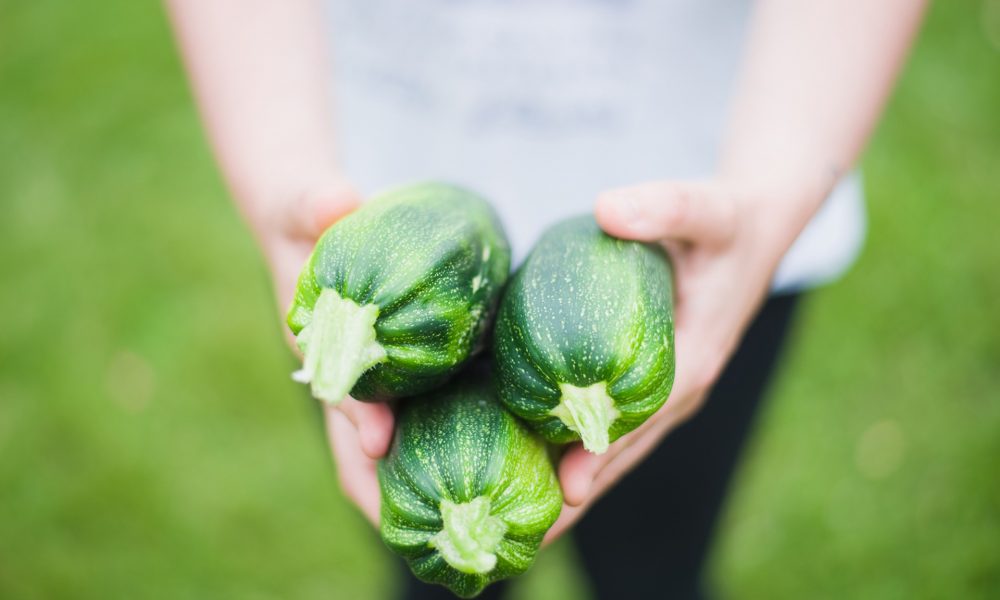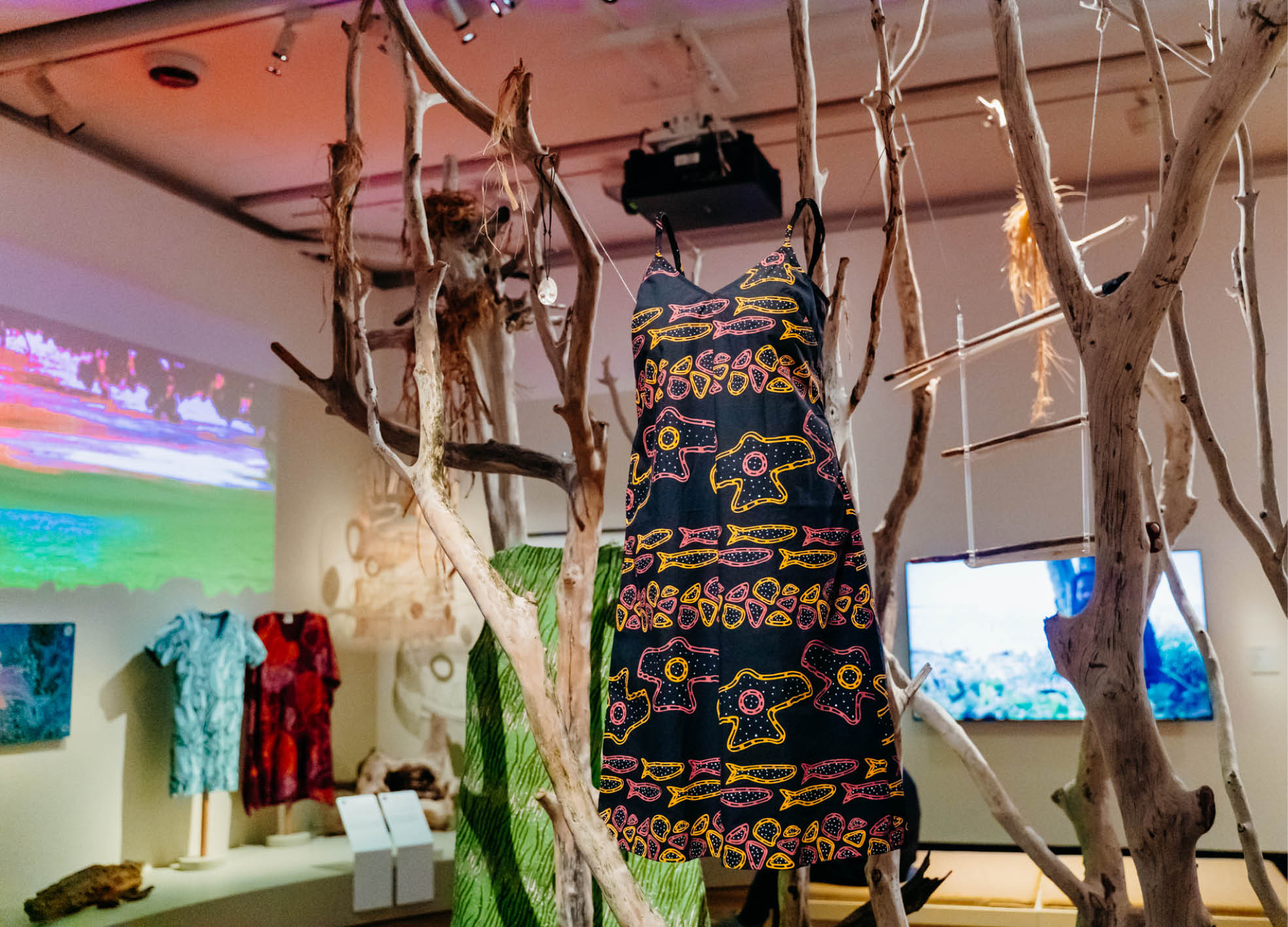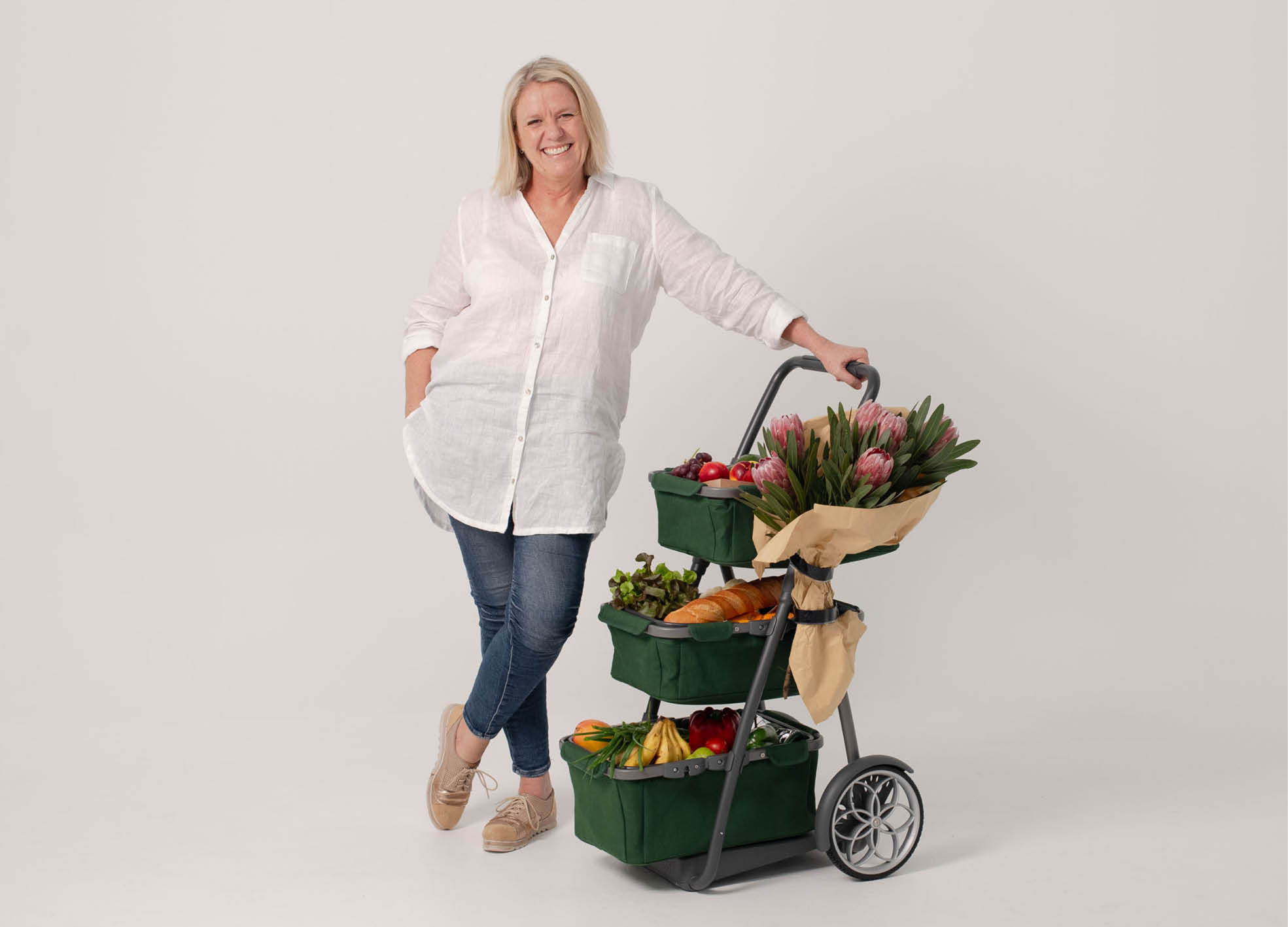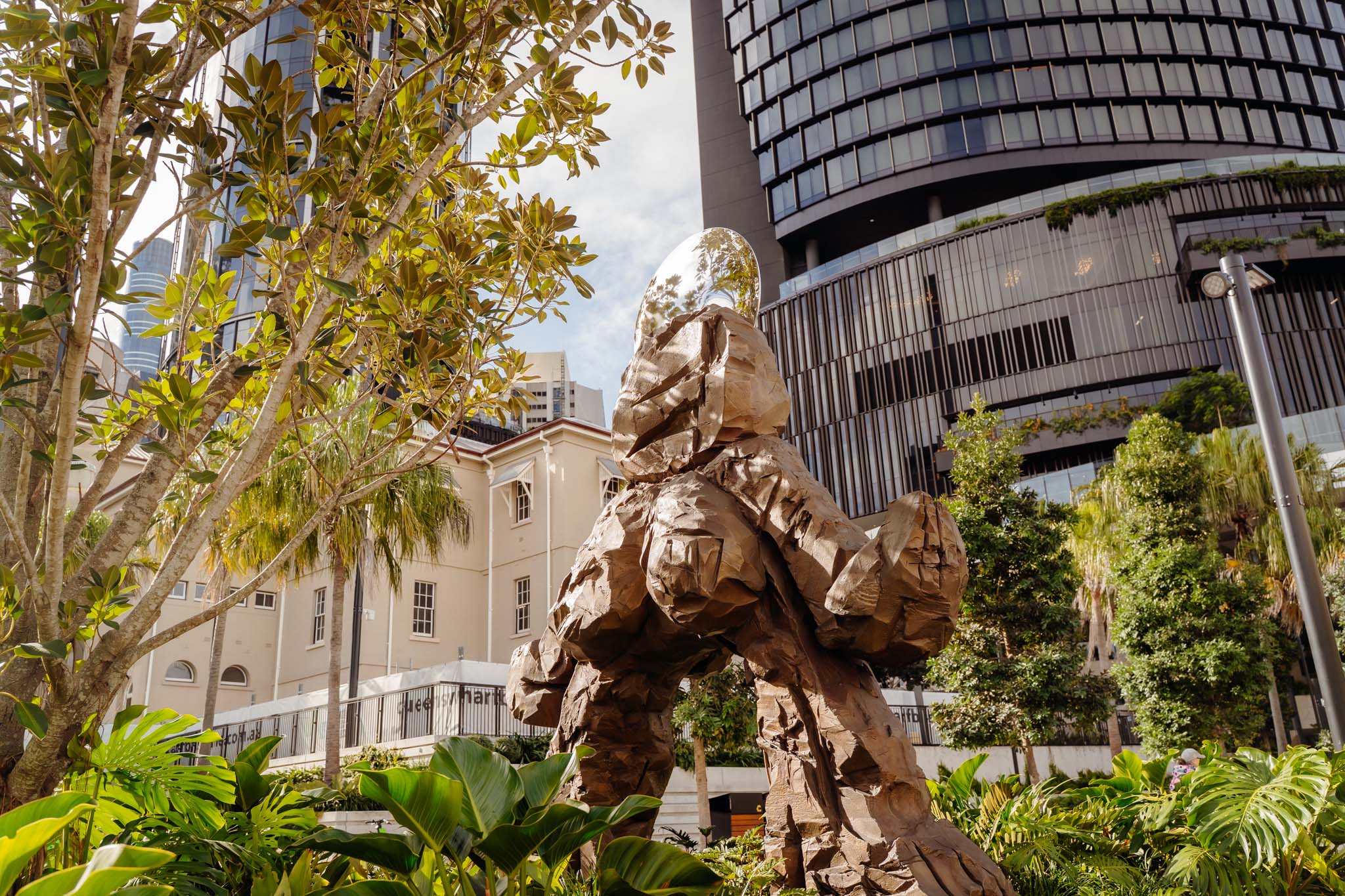Veg in the City: Five Things to Know

- Words by Peppermint
With an ever-changing climate and increasingly sprawling population, the world’s farmland is under threat. But we all need to eat, right? With 580 community gardens around the country, the idea of growing food in cities is beginning to catch on – and the Urban Agriculture Forum is all about sharing knowledge to strengthen that movement. For its second-ever forum, the un-conference brought together government, educators, gardeners, health professionals, innovators and individuals to share ways to help shape sustainable, healthy and resilient food-growing cities around Australia – and here are the top five takeaways you can implement at home.
Protecting the peri-urban
Dr Lenore Newman, from the University of Fraser Valley in Canada, is a researcher and advocate for protecting the peri-urban farm – the farms that sit at the fringes of our city borders, but which keep getting chewed up by sprawl. “We’re on a fight for the world’s farmland,” she said. With only 14% of our total land’s surface being used to grow food (aside from the icy bits), she says “we need to make room for food”. And the solution doesn’t lie with bulldozing more forests. It will be found in urban and suburban farming—growing food within the city it’s meant to feed. So get digging! Even pot plants count.
Worms love avocado
While Australian city dwellers might be big fans of their smashed avocado come breakfast, it turns out it’s the favourite food of worms too! Home worm-farms are an easy way to ensure you’re keeping methane-releasing food scraps out of landfill and generating food (worm juice and compost) for your garden bed at the same time. Vermiculture researcher Liane Colwell from UTS shared that worm juice doesn’t work on native trees, so keep your castings for your veggie patch. And while we already know worms don’t like garlic, citrus or chilli, it turns out they’re also opposed to mushroom, cherry and even green bean scraps – so take these off the menu at your worm cafe.
Waste wake-up call
China’s ban on foreign waste imports has left Australia in a bit of a pickle, but Rob Pascoe from Closed Loop thinks it’s the perfect moment for change. “We’re now facing this perfect storm. Why don’t we demand that we use our resources,” he said. Closed Loop’s Simply Cups coffee cup recycling program (as covered in Issue 35 of Peppermint) is forging ahead. And the company’s also recently started using a new world-first technology to transform any flexible plastic back into any plastic shape. A circular economy is within our midst! But the best action is still to not create the waste in the first place. “We’ve only become a throwaway society in the past 30 or 40 years.”
A bug’s life
Soil scientist Declan McDonald is on a mission to convince gardeners to “replace optimism with science” – swapping out the ‘she’ll be right, mate’ attitude for understanding the basic chemistry that makes our home gardens thrive – and that includes the creepy crawlies that live in soil. “In any biological system it’s about maintaining the balance,” he said. And the vast array of micro and macro-organisms that live in our soils help keep that essential balance, creating the soil’s structure (and its pockets of water and oxygen) and regulating the nutrient supply. So instead of thinking about feeding plants, we need to think about feeding the soil and keeping its hardworking bug communities healthy and happy (and they’ll channel that love back up the plant pipeline).
No more ‘bush tucker’
“You can’t eat our food if you can’t swallow our history,” said Bruce Pascoe. The Aboriginal author of Dark Emu (who we interviewed in Issue 33 of Peppermint) would like us to stop using the term ‘bush tucker’. He says Aboriginal peoples didn’t just stumble upon food in the bush – instead, ‘bush tucker’ was their fruits and vegetables, and while they did forage and hunt, they also cultivated crops, just like farmers grow our potatoes and wheat today. Finally, their bread wasn’t ‘damper’, but risen loaves made from kangaroo grass, water lily seeds and nardoo seeds ground against a rock into flour.
JOIN OUR MAILING LIST
Brighten up your inbox with our not-too-frequent emails featuring Peppermint-related news, events, competitions and more!
explore
More articles
When you hang a painting on a wall, the story stays put. But when you wear a beautifully made garment that may as well be a piece of art? The story travels. It moves through the world with you –…
We all do it: fire up the car for a 5-minute drive to pick up groceries, drop off sewing supplies, or run a quick errand…
Here’s a question: who decided that natural fibres aren’t a great fit in activewear? For Geraldton mum-of-four Jade Payne, that question became paramount after a…
Fancy a getaway in a heritage building that was once a hospital, an orphanage AND a school in a previous life? Despite what your initial…
When the algorithm gods reward dance trends over hand-thrown ceramics, and building a website feels more stressful than a tax return, where’s a maker to…
Time-travelling lungfish floating in a mosaic of glass tiles, a four-breasted female empowerment goddess cast in bronze, and a striking botanical sculpture spanning 15 metres,…
Hang out with us on Instagram
“Crafting is something that has come naturally since I was small and I just haven’t stopped. When I was smaller, I was interested in the end result. As I’ve gotten older, I realise it’s the process that keeps me coming back to craft. It’s a meditative state for me and I find the repetitive action of the stitching and felting quite therapeutic.”
Craving a world filled with warmth and whimsy? It’s all in a day’s work for textile artist @Cat_Rabbit, whose latest book, ‘Trinkets’, is bursting with felty food friends to make and cherish. Cat invited us into her universe, filled with cheeky characters, layered storytelling and loads of humour.
Plus: try the super sweet pattern for Cat’s Lucky Pickle, perfect to make as a stocking stuffer, extracted from Trinkets.
Read more from our ‘Just felt right’ feature in Issue 64, at newsagents and stockists now!
Photos: Tatanja Ross @On_JacksonStreet and Cat Rabbit
#PeppermintMagazine #CatRabbit #LuckyPickle #Craft #Crafting #Felting #FeltCrafts #Trinkets #ChristmasDecorations

Our hearts go out to everyone impacted by the Bondi Beach violence, especially the Jewish community. Also to the beachgoers, those who bravely helped and the first responders.
While it`s easy – and understandable – to get caught up in the horror of it all and direct anger at certain groups, remember this quote from teacher and author Erin Gruwell: "Don`t let the actions of a few determine the way you feel about an entire group."
“You don`t fight racism with racism. You fight racism with solidarity," said Bobby Seale of the Black Panthers. And solidarity is exactly what we need right now.
If you are feeling overwhelmed, you are not alone. Remember there is much more kindness in the world than hate. ❤️🩹
@LifelineAustralia has created a Bondi Beach Incident: Wellbeing support guide, where you’ll find information about common reactions, reassurance that what you’re feeling is valid, and ideas for taking care of your wellbeing.
https://lifeline.org.au/bondi-incident
You can also call Lifeline on 13 11 14, text on 0477 13 11 14 or chat at lifeline.org.au/crisis-chat anytime, no matter how this has impacted you.
@BeyondBlueOfficial is also available with free 24/7 support by phone on 1300 22 4636 or webchat at https://www.beyondblue.org.au/
Register.Find.Reunite. has been activated by @RedCrossAu to help people reconnect with family and friends. Visit redcross.org.au to access the service.
@NSWPolice Public Information and Inquiry Centre (PIIC) is operating 24/7 on 1800 227 228 for information relating to people impacted.
@LifeBloodAu is supporting Sydney hospitals. O- and O+ blood are always in high demand in emergencies. To donate (from anywhere in Australia – all states are welcome and helpful!) call 13 14 95 or use the Lifeblood app.

Just a reminder… from @SugarHouseCeramicCo
This holiday season be kind, patient and shop local!
#ShopSmall #ShopLocal #SupportSmallBusiness

✨️ Our website is getting a glow-up! ✨️
Sorry for the inconvenience but it will be offline for a few days. You can still purchase subscriptions (perfect for chrissy presents!) via the links on the holding page.
Last year we were extremely excited to receive funding from the Meta Australian News Fund, in partnership with the Walkley Foundation. The result of this is a fabulous new website, with a sustainable fashion and sewing directory that will follow early next year. We`ve worked with the lovely Amy and Jenny at @CrumpetClubHouse who have been making the magic happen – we can`t wait to show you the outcome! ✨️
In the meantime, please get in touch if you need help with anything – hello@peppermintmag.com
We`ll see you on the other side! 🌈

🎀 12 DAYS OF XMAS GIVEAWAYS 🎀
🎄On the 12th day of Christmas, we’re giving away… a GREENPAN FROST ICE CREAM & FROZEN DRINK MAKER! 🎄
Ice, ice, baby! Calling all kitchen magicians and dessert devotees: it’s time to churn, blend and devour your way to frozen heaven. It’s our final giveaway – and hoo girl, it’s a goodie! Thanks to the clever folks at @TheOriginalGreenPan.Anz, one reader will cool their mitts on the Frost Ice Cream & Frozen Drink Maker – perfect for conjuring up home-made gelato, sorbet, smoothies, slushies and more!
Valued at $599, the Frost Ice Cream & Frozen Drink Maker is designed with GreenPan’s signature Thermolon™ ceramic non-stick coating, so you can whip up summer-ready sweet treats free of PFAS, PFOA, lead and cadmium.
To snag this frosty prize, follow @TheOriginalGreenPan.Anz and tag a friend in the comments below before midday AEST 15 December! (Australian and New Zealand addresses only, please.) Good luck!
Update: The lucky winner of our final giveaway is @just__for__van - congrats! We`ll dm to get your details. Well done! 🎉
#PeppermintMagazine #12DaysOfChristmas #12DaysOfGiveaways #GreenPan

Oh hey 👋🏼 Just a little reminder that our subscriptions are sent in paper envelopes, which is a bit of a rarity in our industry. 💅🏼
If you need more reasons to subscribe, how about these:
💌 Enjoy a new issue arriving in your letterbox every six months.
💌 Subscribers exclusively receive FOUR digital sewing patterns per year!
💌 You’ll be the first to get your hands (and needles) on our patterns with early access.
💌 Get a 20% discount code on back issues of Peppermint so you can start your collection today!
💌 Automatically go in the draw to win amazing prizes each issue.
💌 Feel good about your subscription arriving in plastic-free postage.
💌 Support a small, women-led Australian business.
💌 Help us make the world a better place!
And... it`s a perfect Christmas present! We have a downloadable card you can print to go with your gift.
💌 Link in bio!
#PeppermintMagazine #SupportSmallBusiness #ShopLocal #ShopSustainable #PlasticFree
















